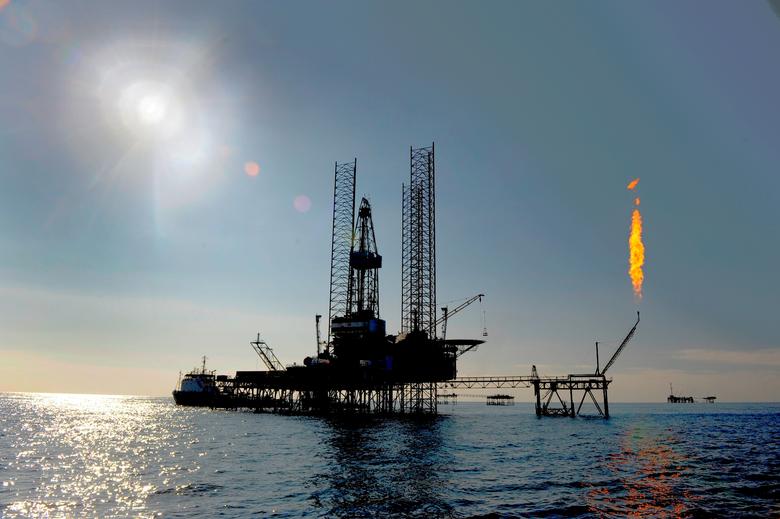
CASPIAN OIL UP

NGW wrote, The Russian government has issued the license for the Central Oil and Gas Company – a joint venture between Lukoil (25%), Gazprom (25%) and Kazakhstan's KazMunaiGaz (50% ) – to develop the Central field.
The field is within the Russian sector of the Caspian sea, but its development must be conducted with the participation of Kazakh partners.
The structure has been passed for prospecting, exploration and production of hydrocarbons without an auction for a period of 25 years. The geological exploration stage will last seven years.
Vice-president of Lukoil Ravil Maganov said the company expected the further exploration of reserves of the Central structure on the Caspian Sea shelf. The company estimates the structure's reserves not less than 90mn mt of oil and 500bn m³ of gas.
On October 15, 2015 Russia and Kazakhstan signed a protocol that provides a license for subsoil use of the Central area in the Caspian Sea. Kazakhstan is also eying Russian companies' participation in its offshore Khvalynsk field by late 2016 under the PSA. That field has 322bn m³ of gas, 18.4mn mt of condensate and 242mn mt of oil.
Kazakhstan exported 6.4bn m3 of natural gas, mostly to Russia and Kyrgyzstan – of which some will have gone on to China – in the first half of the year, and produced 22.7bn m³, according to the government. In 2015, the country's total gas output stood at 45.3bn m³, of which 12.7bn m³ were exported.
The country's gas output is expected to decrease slightly because of unexpected repairs at Gazprom Dobycha Orenburg gas processing plant in July-August. The plant processes 8bn m³/yr of gas, including all the output from the giant sour gas and condensate Karachaganak field which now includes Shell among the equity-holders, following its purchase of BG.
The country is also preparing to resume oil production from offshore giant Kashagan field – which also contains 1 trillion m³ of associated gas – in October 2016.
With or without Russia, it seems Kazakhstan is continuing to develop upstream projects.
Kazakhstan and the Chevron-led consortium Tengiz Chevroil (TCO) approved on July 5 a $36.8bn plan to expand the giant Tengiz field, which has 45% of the country's total production now. The minister for investment and development Zhenis Kasymbek said on August 15 that the level of foreign direct investments in the Kazakh economy would stand at $8-$9bn by the end of this year. On the other hand, Chinese companies have huge share in the country's energy projects.
CNPC acquired 8.4% interest in the giant Kashagan project three years ago after paying $5bn to state-owned KazMunaiGas(KMG). China Energy Fund also reached an agreement with Kazakhstan to purchase a 51% stake in KMG International (KMGI) early 2016. This is a part of a $4bn package of agreements between two companies. China Investment Corp also owns an 11% share of KMG E&P.
The Central Asia-China pipeline with its three branches transited 30bn m3 of Turkmen gas via Uzbekistan and Kazakhstan to western China last year, of which 45% was CNPC's own gas under production-sharing agreements with Turkmenistan. CNPC owns half the pipeline; it has 55bn m³/yr transit capacity.
CNPC has contracts with Turkmenistan to increase gas imports from this country to 65bn m³/yr in coming years, but it depends on both gas production growth and the construction of a fourth branch of the Central Asia-China pipeline which would pass from Uzbekistan, Kyrgyzstan and Tajikistan. None of participating countries has started building it yet.
The Chinese government is not going to freeze construction of the fourth line and hopes that the construction issues will be solved in the near future, vice-secretary of department for Central Asia of the Ministry of commerce of China Luo Wei Dong announced mid-August.
Despite deepening its activities in Kazakhstan and Uzbekistan, Russia cuts its energy ties with Tajikistan and Turkmenistan.
This week Gazprom International decided to abandon its license in Tajikistan owing to the "inappropriateness of further geological exploration" of the Sarikamysh and West Shohambary fields. The company obtained the licenses for geological exploration of these fields in September 2009, so normally they would have expired in September 2018.
In 2014, Gazprom International abandoned the geological exploration projects on Tajikistan's Sargazon and Rengan fields.
Turkmenistan's gas-dominated economy has two problems: the oil price is low and Gazprom is not importing gas. The country's GDP growth slowed to 6.1% in the first half of the year, down from 9.1% in the same period in last year.
Russia stopped gas intake from Turkmenistan in early 2016. GDP growth is expected to sink to 5% in 2016, about 1.5% less than last year, despite double-digit GDP growth in 2013 and 2014.
In the west of Caspian Sea, Azerbaijan has cut commercial gas production despite a 14% growth in total output in Jan-July. The country increased gas re-injection to oil fields to maintain the oil production.
Coming to the south of Caspian Sea, Iran has increased its gas production during Hassan Rouhani's presidency, which started in August 2013. "During this period, we discovered 18 oil and gas fields, and currently the country's total recoverable oil and gas reserves stand at 34 trillion m³ and 159bn barrels," an oil official who wished to be unnamed told NGE on Aug.16.
The figures indicate that the country added 1bn barrels of oil and 600bn m³ of gas to its recoverable proved reserves. Above 80% of Iran's reserves were discovered before 1960. He added that during three years of Rouhani's presidency, the gas production from giant South Pars field increased from 250mn m³/d to 430mn m³/d and the figure is expected to reach 530mn m³/ by March 2017 and 830mn m³/d by March 2019.
Earlier, deputy of oil minister told NGW that Iran's output of 750mn m³/d of raw gas could reach 1bn m³/d by early 2018, while domestic demand remains flat, enabling the country to export 200mn m³/d.
-----
Earlier:






